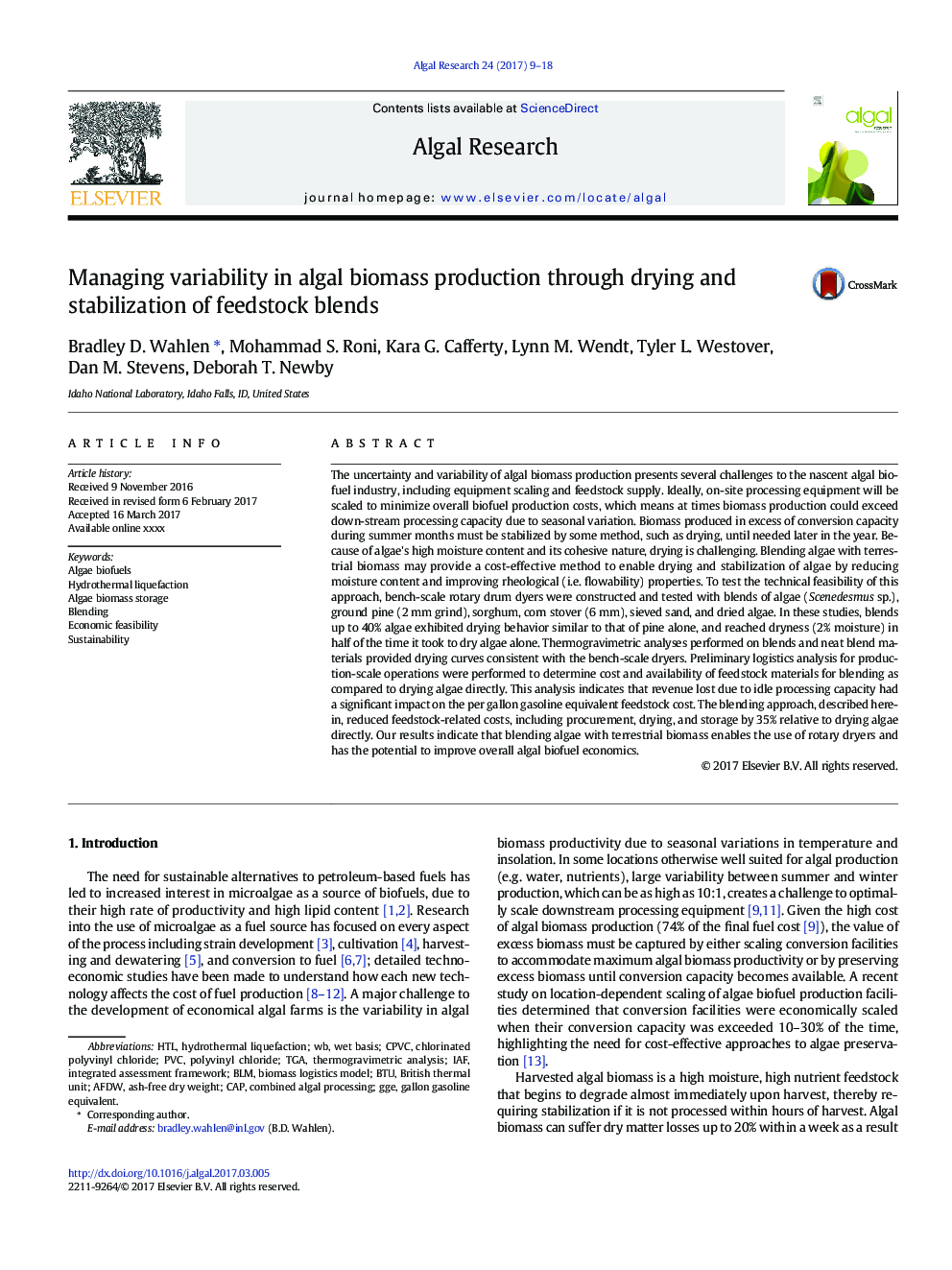| Article ID | Journal | Published Year | Pages | File Type |
|---|---|---|---|---|
| 5478461 | Algal Research | 2017 | 10 Pages |
Abstract
The uncertainty and variability of algal biomass production presents several challenges to the nascent algal biofuel industry, including equipment scaling and feedstock supply. Ideally, on-site processing equipment will be scaled to minimize overall biofuel production costs, which means at times biomass production could exceed down-stream processing capacity due to seasonal variation. Biomass produced in excess of conversion capacity during summer months must be stabilized by some method, such as drying, until needed later in the year. Because of algae's high moisture content and its cohesive nature, drying is challenging. Blending algae with terrestrial biomass may provide a cost-effective method to enable drying and stabilization of algae by reducing moisture content and improving rheological (i.e. flowability) properties. To test the technical feasibility of this approach, bench-scale rotary drum dyers were constructed and tested with blends of algae (Scenedesmus sp.), ground pine (2Â mm grind), sorghum, corn stover (6Â mm), sieved sand, and dried algae. In these studies, blends up to 40% algae exhibited drying behavior similar to that of pine alone, and reached dryness (2% moisture) in half of the time it took to dry algae alone. Thermogravimetric analyses performed on blends and neat blend materials provided drying curves consistent with the bench-scale dryers. Preliminary logistics analysis for production-scale operations were performed to determine cost and availability of feedstock materials for blending as compared to drying algae directly. This analysis indicates that revenue lost due to idle processing capacity had a significant impact on the per gallon gasoline equivalent feedstock cost. The blending approach, described herein, reduced feedstock-related costs, including procurement, drying, and storage by 35% relative to drying algae directly. Our results indicate that blending algae with terrestrial biomass enables the use of rotary dryers and has the potential to improve overall algal biofuel economics.
Keywords
Related Topics
Physical Sciences and Engineering
Energy
Renewable Energy, Sustainability and the Environment
Authors
Bradley D. Wahlen, Mohammad S. Roni, Kara G. Cafferty, Lynn M. Wendt, Tyler L. Westover, Dan M. Stevens, Deborah T. Newby,
